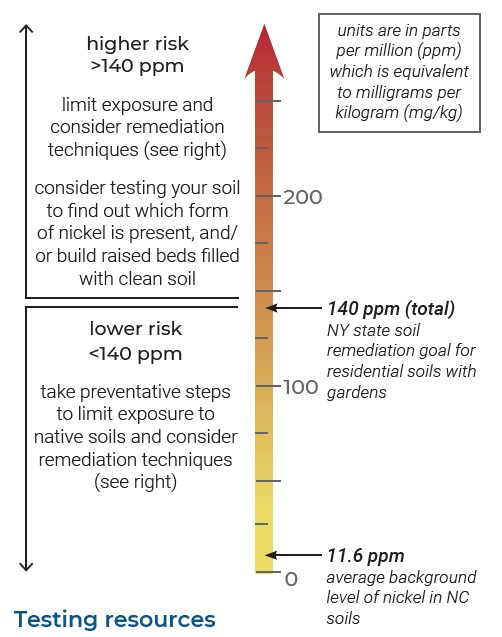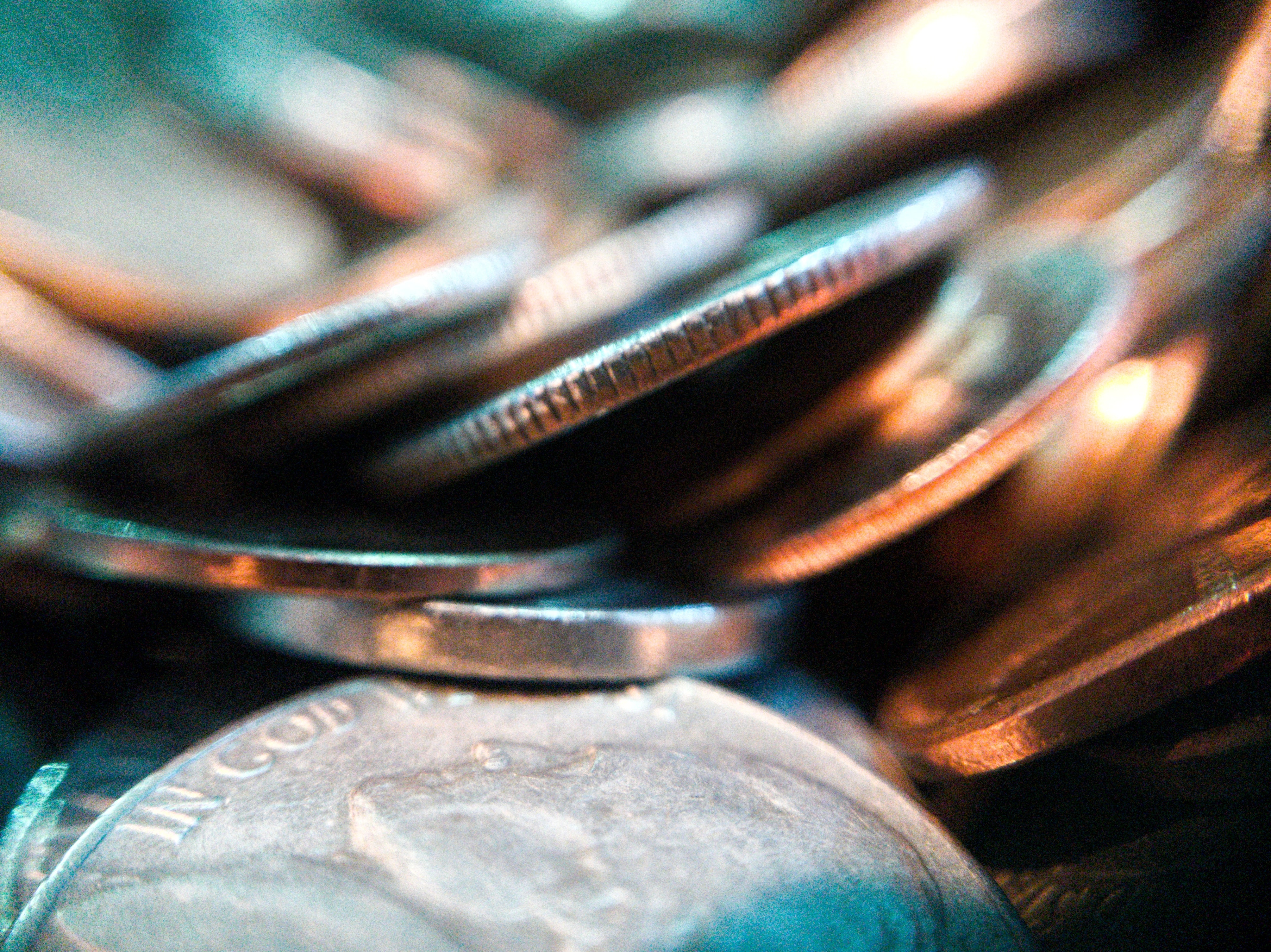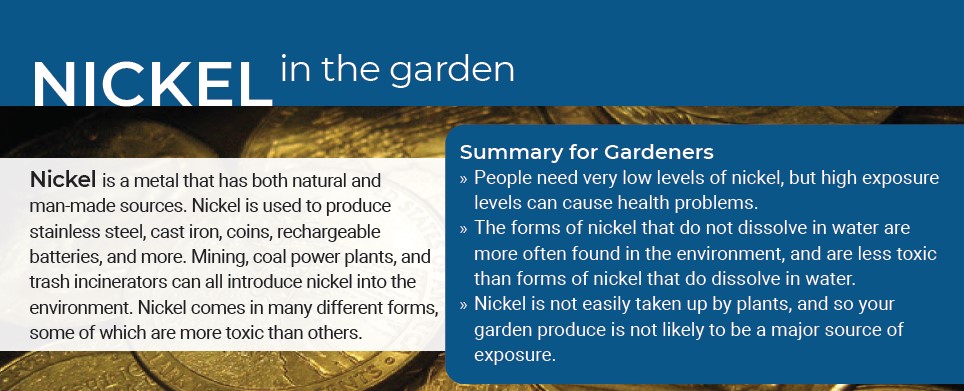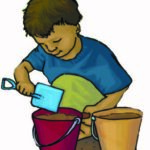Nickel in the Garden
go.ncsu.edu/readext?824930
en Español / em Português
El inglés es el idioma de control de esta página. En la medida en que haya algún conflicto entre la traducción al inglés y la traducción, el inglés prevalece.
Al hacer clic en el enlace de traducción se activa un servicio de traducción gratuito para convertir la página al español. Al igual que con cualquier traducción por Internet, la conversión no es sensible al contexto y puede que no traduzca el texto en su significado original. NC State Extension no garantiza la exactitud del texto traducido. Por favor, tenga en cuenta que algunas aplicaciones y/o servicios pueden no funcionar como se espera cuando se traducen.
Português
Inglês é o idioma de controle desta página. Na medida que haja algum conflito entre o texto original em Inglês e a tradução, o Inglês prevalece.
Ao clicar no link de tradução, um serviço gratuito de tradução será ativado para converter a página para o Português. Como em qualquer tradução pela internet, a conversão não é sensivel ao contexto e pode não ocorrer a tradução para o significado orginal. O serviço de Extensão da Carolina do Norte (NC State Extension) não garante a exatidão do texto traduzido. Por favor, observe que algumas funções ou serviços podem não funcionar como esperado após a tradução.
English
English is the controlling language of this page. To the extent there is any conflict between the English text and the translation, English controls.
Clicking on the translation link activates a free translation service to convert the page to Spanish. As with any Internet translation, the conversion is not context-sensitive and may not translate the text to its original meaning. NC State Extension does not guarantee the accuracy of the translated text. Please note that some applications and/or services may not function as expected when translated.
Collapse ▲Sources of nickel exposure
Nickel is not easily taken up by plants, so direct contact with contaminated soil is the most likely route of exposure in the garden. Low-level exposure from soil or water is not a major concern, but hotspots from man-made sources may also exist. Below are some of the main sources that release nickel into the environment or directly expose people.
Exposure to nickel in the garden
How am I exposed? Eating or direct skin contact with contaminated soil particles, or eating contaminated produce can cause exposure, but mainly at very low levels.
Are my garden plants safe to eat? Nickel binds very tightly to soil, and is not easily taken up by most plants. Some plants like Indian Mustard and sunflowers take up more nickel than other plants, but most of the metal will stay in the roots.
Should I be worried? When we consume nickel, only about 1% is absorbed by our bodies, which is then quickly excreted. The low levels we may be exposed to from produce is not a major concern, and there are many health benefits from gardening.

|
Limit children’s exposure — Small doses matter. Children breathe, eat, and drink more relative to their size than adults — Their bodies and brains are still developing — Children spend more time on the ground and often put things (like dirt) into their mouths — They have more skin surface area than adults, so skin exposure also matters |
Making sense of regulatory standards
No official standards have been established in North Carolina for acceptable levels of nickel in garden soils. For eight different nickel compounds, the preliminary soil remediation goal (PSRG) for residential soils in NC ranges between 140 and 310 ppm. A ninth compound, nickel subsulfide, is considered more toxic and has a PSRG of 0.41ppm.
Health impacts of nickel
People need very low levels of nickel in their bodies, which we get from food, but high levels of exposure can cause health problems.
Occupational exposure to high levels of airborne nickel can lead to chronic bronchitis, reduced lung function, lung and sinus cancers, and more. Nickel in cigarette smoke has also been linked to lung cancer.
Skin contact with nickel, usually from jewelry, can lead to skin irritation. This can occur in 10 to 20 percent of people after prolonged contact. In some people, eating or breathing nickel can lead to similar reactions or asthma attacks, but this is uncommon.
Reduce nickel exposure in the garden
- Adding compost or other organic matter from a contaminant-free source may help limit nickel uptake by plants. Check the NC Composting Council website to find STA or OMRI certified compost.
- Adding agricultural lime (to raise soil pH above 6.0) can also limit plant uptake.
- Thoroughly wash produce grown in nickel-contaminated soil to remove any soil or dust.
- To reduce nickel particles in air from dust, cover bare soil with mulch and keep the soil moist, but not water-logged.
- If your soil nickel levels are high, consider not planting root vegetables, since nickel tends to stay in plant roots.
- Conduct a soil safety training for all garden users on exposure reduction strategies.
- Visit our website below for our factsheet on 10 Healthy Garden Habits.

 |
How to test your soil and interpret the results |
 |
Well water testing for nickel |
 |
Still have questions about nickel soil testing? Email us at superfund@duke.edu. |
 |
For more information visit: Duke Superfund Community Engagement |
Email us at superfund@duke.edu
This factsheet was created by the Duke University Superfund Research Center’s Community Engagement Core with the goal of helping garden managers, Extension agents, Master Gardeners, and home gardeners identify, understand, and manage risks associated with chemical contamination that may be present in garden soils. This work was supported through the National Institute of Environmental Health Sciences P42 Multiproject Center Grant program, grant number P42ES010356.










